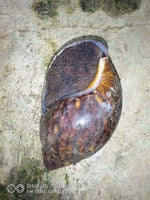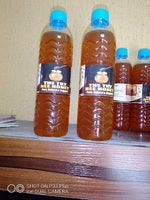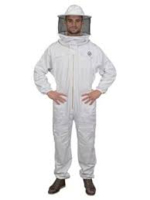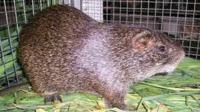Post by Ismail AbdulAzeez on Apr 17, 2017 23:38:30 GMT 1
The success of a big breeding enterprise depends on the number of weaners
produced and weaned per sow per annum and the efficiency with which they are produced.
A sow should produce a minimum of 10 weaners per annum in order to be able to pay all production costs. To this end, the care of the sow during gestation and the subsequent care of the piglets prior to weaning demand great attention as faulty management result in failure to get large number of piglets from breeding sows,
Mortality in pigs is highest during the first few weeks of life. Adequate precautions must therefore be taken to ensure that farrowing facilities are suitably provided to prevent losses from crushing by the sow.
Disease and stress should also be kept at a minimum level.
Management before farrowing:-
Care of the in-pig sow:
Farrowing occurs approximately 114 days after breeding. To reduce stress during farrowing, the sow should be moved to the farrowing pen about 2 weeks before the expected date.
The sow should be washed to remove dirt from its body. Newborn piglets have limited resistance to disease; therefore the farrowing pen must be cleaned and disinfected before the sow is brought into the pen.
Care of the farrowing pen:
The suggested cleaning procedure of the farrowing pen is as follows:
Remove all loose bedding material and manure.
Soak the pen with water to loose any residual dirt.
Wash thoroughly and disinfect with lye solution.
Allow the floor to dry before bringing in the sow.
Management at farrowing:
The most critical period in pig production is farrowing time. The attendant should be present during farrowing so that assistance may be given if required. This is especially important for first-litter sows and where farrowing crates are not available. On rare occasions, the heart may stop beating during birth and the piglet may appear dead. External massage may stimulate the heart to start functioning again, but to be successful it must be applied as soon as possible.
Under normal circumstance, the piglet has no difficulty freeing itself from the attachment to the sow, and no attempt should be made to pull the umbilical cord free except in the case of small and weak piglets. To prevent infection through the cord, it should be dipped in tincture of iodine.
The colostrums {first milk} produced by the sow contains important antibiotic that give temporary protection against disease. These antibiotics can be absorbed only during the first few hours of life. It is therefore essential that each piglet receives a share of the Colostrums soon after birth. If necessary, small or weak piglets should be helped to suckle.
There may be too many piglets in the litter for the sow to nourish or the sow may be unwilling or unable to nurse all the piglets. It would then be necessary to find a foster mother, for the piglets; care should be taken to see that the foster mother is at the same stage of lactation.
A sow tends to reject any new piglet presented to it for nursing unless it cannot distinguish her own litter. This problem may be over-come by mixing the additional piglets with the litter and rubbing them all with palm Oil. Hand feeding of dry powdered milk with feeding bottle may be practiced if a foster mother is not available.
At birth, piglets normally have four pairs of temporary tusks know as needle or milk teeth. They can cause irritation to the sow during suckling. They could also injure other piglets. The teeth should be chipped off using side-cutting tooth, nippers. Care should be taken not to injure the gum by cutting too low.
Litter weights taken at birth will provide information on the productivity of the sow.Each piglets should be numbered and birth weight recorded for identification purposes. Numbering could be either by ear notching or tattooing.
The feed intake of the sow should be restricted during the first few days after farrowing to avoid digestive disturbances.
Plenty of clean, fresh water should be provided at this time. Clean the pen daily and replace soiled beddings with dry fresh bedding to make the sow and piglets comfortable. Wood shavings, ground maize cob or dry grass could be used as bedding. Brooder laps may be provided to keep the piglets warm.
produced and weaned per sow per annum and the efficiency with which they are produced.
A sow should produce a minimum of 10 weaners per annum in order to be able to pay all production costs. To this end, the care of the sow during gestation and the subsequent care of the piglets prior to weaning demand great attention as faulty management result in failure to get large number of piglets from breeding sows,
Mortality in pigs is highest during the first few weeks of life. Adequate precautions must therefore be taken to ensure that farrowing facilities are suitably provided to prevent losses from crushing by the sow.
Disease and stress should also be kept at a minimum level.
Management before farrowing:-
Care of the in-pig sow:
Farrowing occurs approximately 114 days after breeding. To reduce stress during farrowing, the sow should be moved to the farrowing pen about 2 weeks before the expected date.
The sow should be washed to remove dirt from its body. Newborn piglets have limited resistance to disease; therefore the farrowing pen must be cleaned and disinfected before the sow is brought into the pen.
Care of the farrowing pen:
The suggested cleaning procedure of the farrowing pen is as follows:
Remove all loose bedding material and manure.
Soak the pen with water to loose any residual dirt.
Wash thoroughly and disinfect with lye solution.
Allow the floor to dry before bringing in the sow.
Management at farrowing:
The most critical period in pig production is farrowing time. The attendant should be present during farrowing so that assistance may be given if required. This is especially important for first-litter sows and where farrowing crates are not available. On rare occasions, the heart may stop beating during birth and the piglet may appear dead. External massage may stimulate the heart to start functioning again, but to be successful it must be applied as soon as possible.
Under normal circumstance, the piglet has no difficulty freeing itself from the attachment to the sow, and no attempt should be made to pull the umbilical cord free except in the case of small and weak piglets. To prevent infection through the cord, it should be dipped in tincture of iodine.
The colostrums {first milk} produced by the sow contains important antibiotic that give temporary protection against disease. These antibiotics can be absorbed only during the first few hours of life. It is therefore essential that each piglet receives a share of the Colostrums soon after birth. If necessary, small or weak piglets should be helped to suckle.
There may be too many piglets in the litter for the sow to nourish or the sow may be unwilling or unable to nurse all the piglets. It would then be necessary to find a foster mother, for the piglets; care should be taken to see that the foster mother is at the same stage of lactation.
A sow tends to reject any new piglet presented to it for nursing unless it cannot distinguish her own litter. This problem may be over-come by mixing the additional piglets with the litter and rubbing them all with palm Oil. Hand feeding of dry powdered milk with feeding bottle may be practiced if a foster mother is not available.
At birth, piglets normally have four pairs of temporary tusks know as needle or milk teeth. They can cause irritation to the sow during suckling. They could also injure other piglets. The teeth should be chipped off using side-cutting tooth, nippers. Care should be taken not to injure the gum by cutting too low.
Litter weights taken at birth will provide information on the productivity of the sow.Each piglets should be numbered and birth weight recorded for identification purposes. Numbering could be either by ear notching or tattooing.
The feed intake of the sow should be restricted during the first few days after farrowing to avoid digestive disturbances.
Plenty of clean, fresh water should be provided at this time. Clean the pen daily and replace soiled beddings with dry fresh bedding to make the sow and piglets comfortable. Wood shavings, ground maize cob or dry grass could be used as bedding. Brooder laps may be provided to keep the piglets warm.












